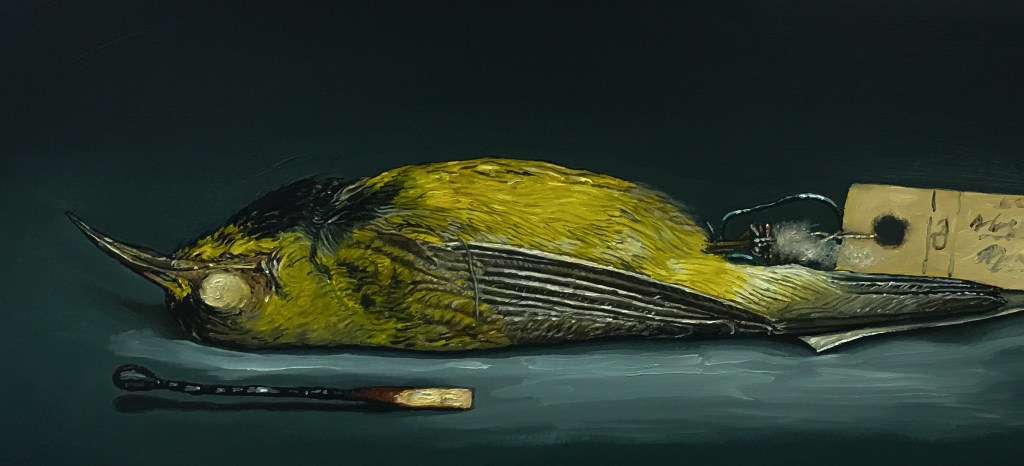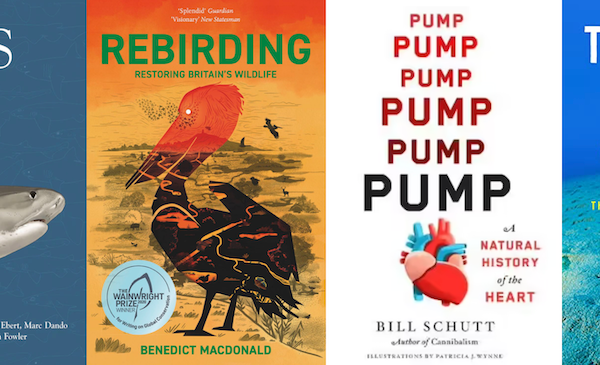Even in crowded museums, I can usually count on having the bird specimen displays to myself. The chattering school groups and camera-toting tourists hurry by the tattered feathers in search of interactive exhibits and interpretive technology.
I, on the other hand, am there for the taxidermy – particularly the specimens of extinct species. Anymore, they’re often tucked in back corners or in old display cabinets. The extinct birds often look ratty and dusty. But I still find myself lingering.
It’s sobering to realize that this is as close as I’ll come to a pink-headed duck or Carolina parakeet. As a lifelong observer of wildlife, I try to imagine the animal alive in its native habitat, but I mostly come up short. I wonder, of course, why the passenger pigeon went extinct while the seemingly similar mourning dove thrives. I ponder the life of the individual bird before me, and how it came to this museum.
Fortunately, painter, writer and naturalist Alberto Rey has similar questions, and has pursued them with his Extinct Birds Project, an artistic exhibition, book and website. Rey began pursuing the project in 2015, when he gazed at a drawer of extinct birds at the Roger Tory Peterson Institute of Natural History. These specimens play an important role in bird conservation history; Peterson used many of them as models for his famous field guide illustrations.

Rey completed paintings of 17 specimens, currently on display (through August 18) at the UB Anderson Gallery in Buffalo. The exhibition includes Rey’s art plus bird specimens and video from the Roger Tory Peterson Institute. But even if Buffalo is not in your travel plans, Rey’s book Extinct Birds Project is essential reading if you have an interest in birds and bird conservation. It’s far more than an exhibition book. In fact, it contains some of the most original writing on extinct birds I’ve encountered.
I don’t write that lightly. I have read a lot on extinct species. Unfortunately, historical records for many lost birds are scant, leaving authors to repeat the same narratives and rely on the same (often fourth-hand) sources.
Rey uses the resources of the Roger Tory Peterson Institute to track down what we know about the birds, their habits, and the social and environmental factors that led to their extinction. This alone is reason to read the book. But I especially appreciated that Rey, when possible, explores the lives of the bird collectors responsible for the specimen. He even includes a selection on bird collection techniques, fascinating reading for an aficionado of old-school natural history expeditions like me.

I have long been fascinated by these bird collectors. I imagine we would have a lot in common: like me, they had passions for birds, hunting and science. Their specimens are of immense scientific value today, helping scientists understand species that otherwise would be merely rumor. (These specimens may even enable us to one day clone extinct species).
However, collecting contributed to the disappearance of the species. Some of the birds on exhibit were the last of their kind, and many individuals thought nothing of blasting them out of existence.
Rey understands this paradox. Coming to terms with his clearly drives him as an artist and naturalist.

These skins, stuffed with cotton in drawers, are our sole remaining link to something lost. Rey lingers over them, obsesses over them. But still, we are left with an incomplete picture. The fading feathers can never connect us to the real thing. But through art and words, Rey conjures what we have lost – and why conserving the birds that remain is such a vital task in the 21st century.




Please try to save our precious birds.
Thank you for this article. It touched my heart and reminds me there is compassion still in the world to grieve for what has already passed and to honor that all creatures great and small are precious in the circle of life
It has been my pleasure to become familiar with Alberto Rey as a customer and friend over the past 3-4 years. I witnessed his work cited here as it evolved during my visits to his workshop. He is a quite, reflective and passionate artist. He takes as much care and shows as much respect for wildlife as he guides anglers as a guide. It’s pleasing to hear how moved Matthew Miller was moved by Alberto’s work.
All the Best Alberto!
I’ve always felt that birds developed to aid their environment. I never knew how, just felt it was so, and that we wouldn’t have forests if it were not for birds.